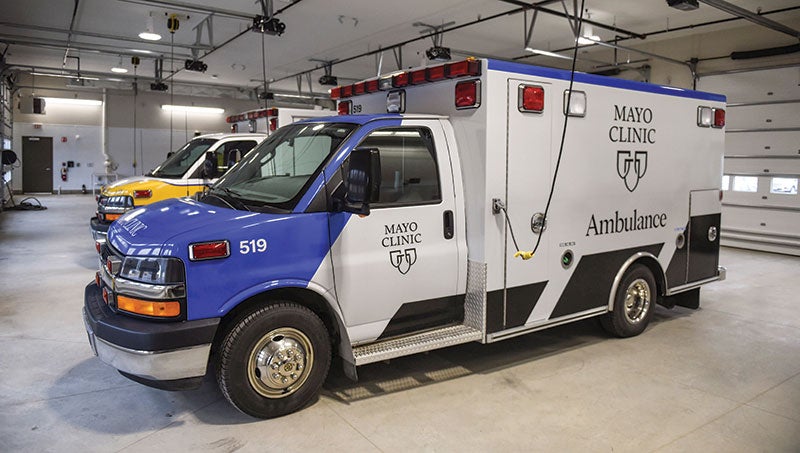New ambulance design focuses on safety for patients and patient care providers
Published 6:19 am Tuesday, December 17, 2019

- Mayo Clinic ambulance interiors are being redesigned after the outside was changed earlier this year. Herald file photo
Mayo Clinic changed the look of the outside of its ambulances earlier this year, adding distinctive black and white reflective wrap material and other high visibility features. Now Mayo Clinic ambulance interiors are being redesigned to enhance the safety and comfort of patients and patient care providers.
Mayo Clinic’s ambulance team convened a group of emergency medical technicians, paramedics and representatives from other work disciplines in September 2018 to consider ways to increase safety. The group brainstormed ideas that included putting equipment and supplies within arm’s reach in the back of the ambulance to minimize times when crew were not restrained with seat belts. They also looked for ways to enhance ergonomics and reduce injury due to lifting and exertion.
“We made a determination that our current configuration needed to be updated to better protect and better restrain our patient care providers when they are in the back of a moving ambulance taking care of patients,” said Matthew Will, director of clinical services for Mayo Clinic Ambulance. “We took one of our existing ambulances that had been removed from service, and with the help of our fleet services vendor, we took all of the existing cabinets and compartments out of the back and began with a clean slate.”
The team set out to design what a patient care area of an ambulance could look like. It took the group about four months to draw up what they wanted, said Paul McIntyre, a support services specialist with Mayo Clinic Ambulance.
“We had a functional prototype ambulance that was about 95 percent complete in matching what we wanted to create,” McIntyre said. “We included enhanced safety features to allow our patient care providers to be seated, including better seat belt technology, and still gave them access to the things they needed and do what was needed for their patient.”
The redesign also added injury-reduction features, such as:
•A lift for large patient oxygen tanks
•Security enhancements using fortified anti-theft technology
•Monitoring systems that would indicate when the driver was making a turn, braking or stopping
The heating and cooling system in the patient care area also was updated for the comfort of patients and patient care providers. Not only are the climate control systems more regulated for a comfortable environment, they keep medications and equipment at optimal temperatures at all times.
The Mayo Clinic team collaborated with Braun Industries Inc., a custom ambulance manufacturer.
“We did some things with the Mayo Clinic Ambulance that we had not done before as a manufacturer,” said Fred Pawelk of Braun. “We mounted cabinets in new ways. We were able to work with the Mayo team to make major changes to the inside of the ambulance without making significant changes to the exterior or size of the vehicle, which means crews are familiar with operating and maneuvering the vehicle.”
McIntyre attributed the final result to a team effort.
“We involved our patient care providers who work in the ambulance, our fleet management area, safety coordinators and our leadership team — all working with the manufacturer and getting us to the point where we are today,” McIntyre said. “Many different considerations have been made to our ambulances, all with the goal of creating something that provides safety, security, injury reduction and functionality for our patient care providers to better serve our patients.”
The new ambulances will go into service at all Mayo Clinic Ambulance Service locations starting in December.




